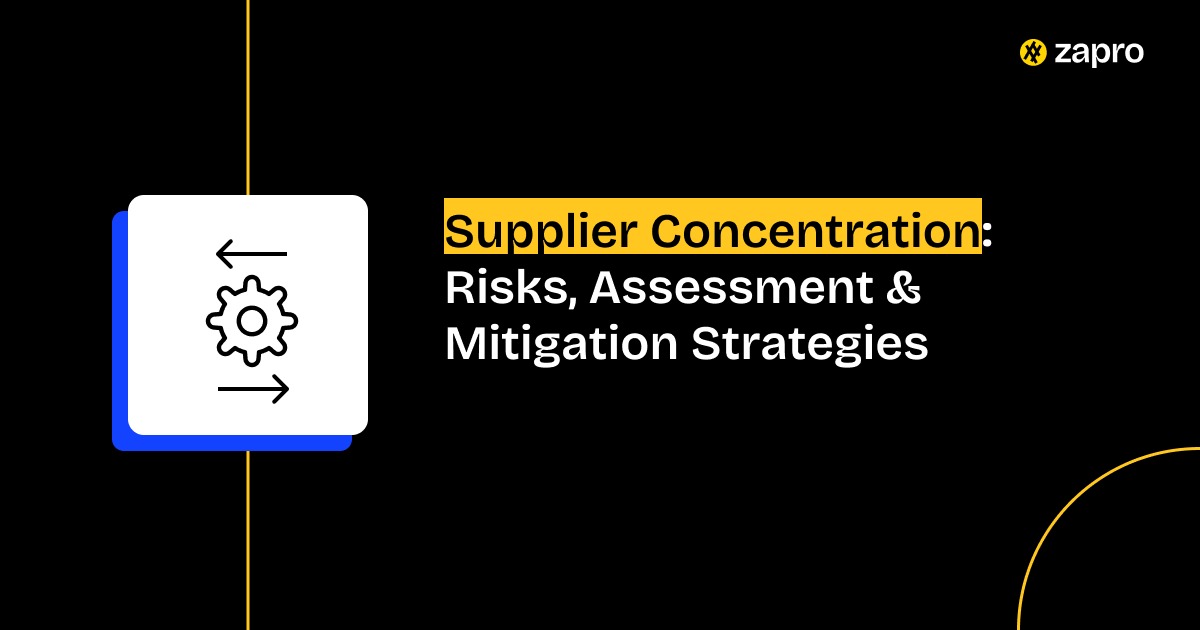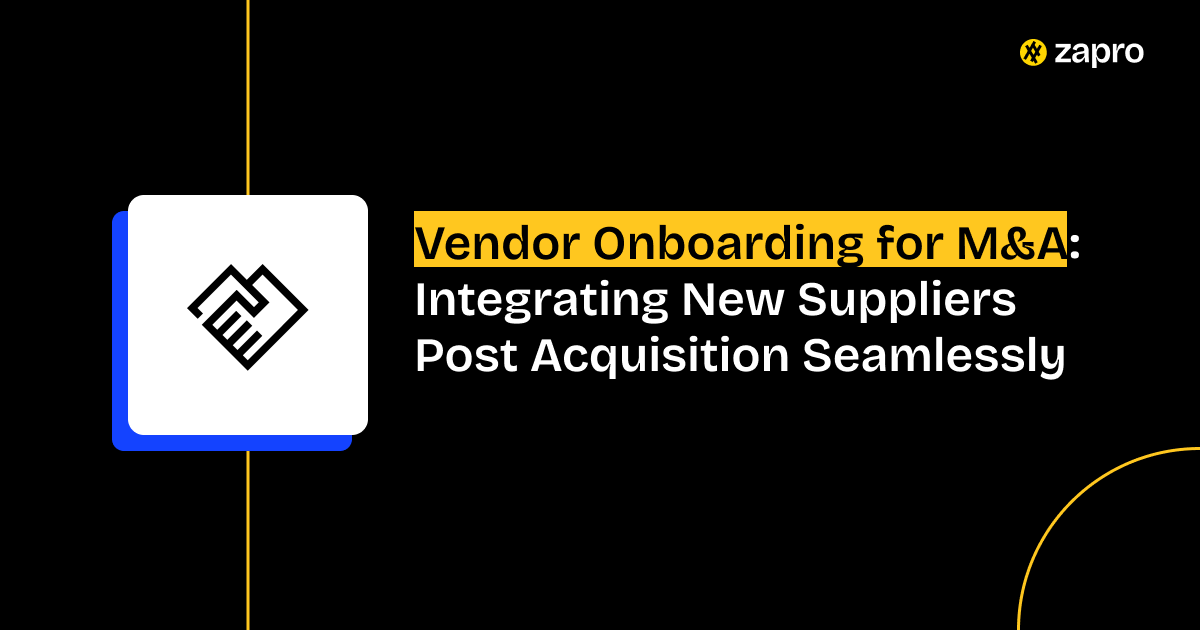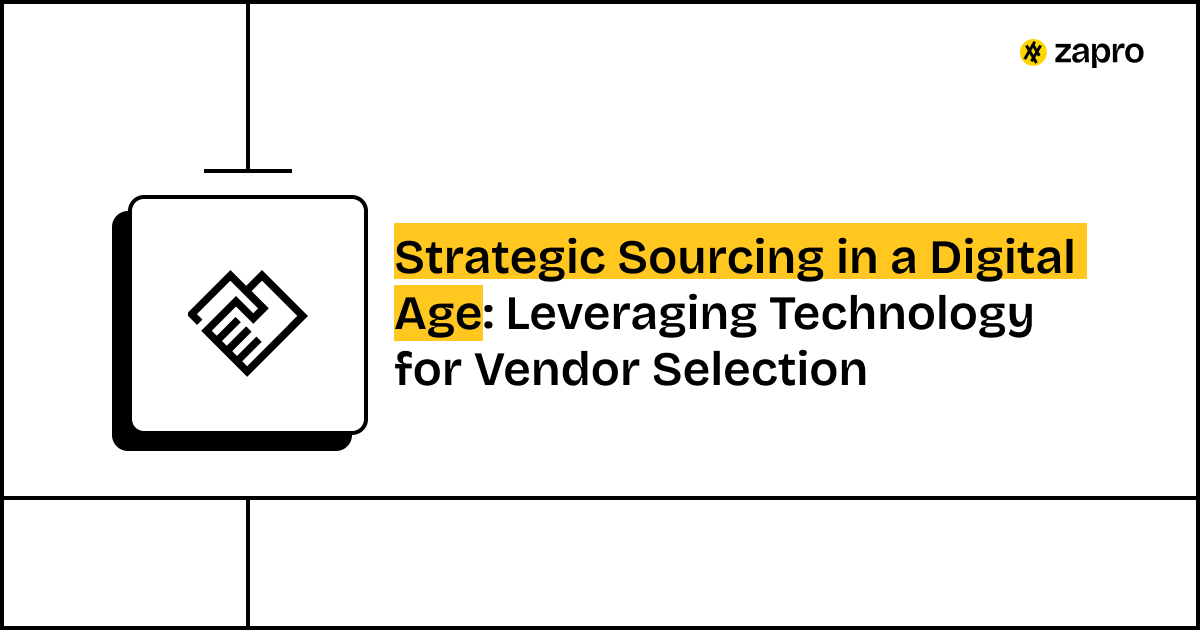What is supplier concentration?
A company faces supplier concentration when most of its procurement budget and supply chain operations depend on only a few vendors. The number of suppliers you depend on for essential goods and services determines your level of concentration risk because fewer suppliers increase this risk.
The level of supplier concentration becomes evident through two metrics which show the percentage of total procurement expenses going to leading suppliers and the degree of operational dependence on primary vendors.
Examples across industries
- Most enterprises operate their applications through the cloud services of AWS and Microsoft Azure and Google Cloud. The providers’ outages and pricing adjustments create simultaneous disruptions to thousands of businesses operating in the market.
- The automotive industry faced worldwide production stoppages because it depended on only a few semiconductor suppliers during the 2020–2022 chip shortage.
- The healthcare sector faces high vulnerability to regional disruptions because China and India produce 70% of the world’s active pharmaceutical ingredients (API) in their territories.
Why it’s becoming a critical topic in 2025
The importance of supplier concentration has increased significantly in 2025. Supplier concentration has been present since always but multiple current elements have made it more urgent:
- The current global sourcing landscape has changed because of rising geopolitical tensions between the US and China and between Russia and Ukraine and the Red Sea shipping crisis.
- Businesses that heavily depend on high-risk areas for their operations will experience negative effects on their ESG compliance and regulatory adherence.
- The evaluation process of company value now includes supplier concentration assessment as M&A teams and investors perform this analysis with greater importance.
- The adoption of SaaS and cloud-first models by most businesses has elevated technology concentration risk to a level where boardroom executives need to discuss it.
Why supplier concentration matters
1. Business continuity
Your business operations become unstable when you depend on only a few suppliers. A factory shutdown together with trade restrictions and brief system outages will stop production and extend delivery times to customers. Organizations with multiple suppliers maintain better resistance against disruptions that affect their operations.
2. Operational efficiency and profitability
High concentration levels in the market give suppliers more power to negotiate better terms. Suppliers who hold essential positions in the market establish control over pricing and delivery times and contractual conditions which results in reduced profit margins.
The concentration of suppliers creates an inflexible situation which forces businesses to maintain outdated systems while facing expensive transition challenges. A supplier base that includes multiple partners enables businesses to keep prices competitive and maintain operational continuity.
3. The assessment of company value includes supplier concentration analysis
The evaluation process for mergers and acquisitions includes detailed assessment of supplier concentration levels. The heavy dependence on one or two suppliers creates risk exposure which typically results in lower EBITDA multiple valuations.
A manufacturing company that depends on 70% of its components from one geographic area will receive lower market value than a competitor with a balanced supply chain.
Key risks of high supplier concentration
Businesses that depend on a small number of suppliers for their operations experience multiple vulnerabilities despite short-term operational benefits. The main business risks emerge when supplier concentration reaches excessive levels.
1. Increased supply chain disruptions
The higher the concentration of suppliers the more severe the effects of disruptions. The automotive industry experienced a semiconductor shortage during the pandemic because East Asian suppliers controlled most of the global chip production. Supply disruptions from single-source supplier dependence affected 75% of companies according to McKinsey research during 2021.
2. Reduced negotiating power
Your business becomes more vulnerable to supplier control because you have invested most of your spending with only one or two vendors. Suppliers take advantage of your limited vendor options to increase prices and extend delivery times and restrict contract flexibility. Organizations that heavily depend on AWS or Azure face substantial migration expenses which prevent them from obtaining improved contractual terms.
3. Quality control challenges
A supplier base that is concentrated between few providers creates insufficient oversight mechanisms. A single vendor failure to meet quality standards will result in complete output disruption for your organization. The 2010 Toyota recall crisis demonstrated how quality problems from limited supplier vendors can grow into major brand damage because of their concentrated supply chain.
4. Overdependence on critical suppliers
The production of specific industries depends on specialized materials which only a few suppliers can provide. The pharmaceutical industry heavily depends on China and India for active pharmaceutical ingredients (APIs) with India importing 70% of all its APIs from China. This excessive dependence on a few suppliers makes systems vulnerable to disruptions when geopolitical tensions or export restrictions occur.
5. Vulnerability to geopolitical, regulatory, and ESG risks
Businesses that concentrate their suppliers become vulnerable to risks stemming from geopolitical events and regulatory changes and environmental social governance (ESG) issues. The political environment and regulatory framework of your supplier’s home country directly affects your business operations when you have concentrated suppliers.
ESG-related forced labor risks in specific areas can develop into major compliance and reputation problems at a fast pace. The 2022 European energy crisis proved how dependence on Russian gas supplies led to complete industry disruptions.
Reduce Supplier Concentration Risk with the #1 Vendor Risk Platform

How to assess your supplier concentration risk
Your supplier concentration assessment requires more than identifying your main vendors. The assessment needs systematic evaluation of your spending patterns and geographic locations and technological dependencies and supply chain dependencies. The following methods enable you to determine and evaluate your level of exposure.
1. Spend concentration analysis
Begin by determining what percentage of your total procurement expenses goes to your leading suppliers. Your procurement risk level becomes higher when any supplier controls more than 30% of your total spending. The analysis reveals which suppliers have too much influence over your operations.
2. Supplier dependency index
The assessment of supplier importance extends past financial data to evaluate their operational value to your business. This includes:
- Availability of alternatives in the market
- Lead times to switch
- The supplier controls a significant portion of your essential strategic materials and technological resources.
A supplier who controls exclusive materials or platforms creates more risk than one who handles large volumes of replaceable spend categories.
3. Geographic concentration risks
Businesses that operate with suppliers in one specific geographic area face increased risk from political instability and environmental problems and logistical breakdowns. Your business faces higher disruption risks because it depends on Chinese ports and European energy supplies during periods of geopolitical conflict and climate emergencies.
4. Technology and SaaS concentration
Digital-first businesses face supplier concentration risks because they depend heavily on limited numbers of cloud and SaaS providers. Your business operations will become completely disabled when your ERP system or CRM platform or infrastructure runs on a single platform because of outages or cyberattacks or contract disputes.
5. Lock-in and switching costs
You need to evaluate the total expenses which would result from switching to different suppliers. Organizations become vulnerable to vendor power plays because they face high integration costs and compliance requirements and retraining expenses that create vendor lock-in situations. SaaS contracts together with long-term manufacturing agreements represent typical examples of such agreements.
Frameworks for measurement
1. Herfindahl-Hirschman Index (HHI)
The Herfindahl-Hirschman Index (HHI) represents a common economic tool which calculates the sum of squared supplier spend percentages. The level of concentration in your supply chain becomes more pronounced when the score increases. The HHI calculation shows severe concentration risk when three suppliers control 80% of your total spending.
2. CR4 Index (Concentration Ratio of Top 4)
The CR4 Index (Concentration Ratio of Top 4) uses a basic calculation to determine the combined market share of your four leading suppliers. A supply base reaches high concentration levels when the CR4 ratio exceeds 60–70%.
The two assessment tools enable procurement teams to transform their subjective observations into quantitative risk evaluations.
Strategies to mitigate supplier concentration risks
The identification of concentration risk marks the beginning of the process.
The actual value emerges from taking early action to decrease dependence and establish business resilience. Businesses can implement these established methods to achieve their goals.
1. Diversify your supplier base
A wider selection of vendors within your supply chain network helps you reduce your dependence on limited suppliers. The process of risk reduction and improved flexibility becomes achievable through the addition of one or two alternative suppliers for essential product categories even when you do not need to expand your supplier base extensively.
2. Implement dual-sourcing and multi-sourcing models
The practice of distributing contracts between different suppliers instead of relying on a single vendor represents a better approach to procurement. The manufacturing industry implements dual sourcing for essential components to achieve both cost effectiveness and supply security. The practice of multi-sourcing between suppliers creates market competition that stops businesses from becoming overly dependent on any one supplier.
3. Maintain supply contract redundancies and safety stock
The costs of maintaining buffer inventory serve as protection against unexpected supply disruptions. The costs of holding buffer inventory serve to protect businesses from the effects of unexpected disruptions. The strategy works best in markets where supply patterns are unpredictable and delivery times stretch over extended periods.
4. Establish strong supplier relationships with open communication
Early risk detection becomes possible through open dialogue with your essential suppliers. The development of collaborative vendor relationships through joint contingency planning and shared forecasting enables better trust between partners who will maintain your business needs during disruptions.
5. Invest in supply chain monitoring systems
Organizations need to spend money on supply chain monitoring systems to obtain real-time data about supplier conditions and geopolitical threats and environmental sustainability performance. Organizations that implement modern procurement and vendor management software systems obtain immediate access to supplier health status information and geopolitical risk data and ESG compliance data for ESG. Businesses that continuously monitor their suppliers can identify potential problems before they become concentration-related issues that disrupt supply chains.
Supplier concentration in a global context
The issue of supplier concentration exists at both company and global levels because it directly relates to worldwide trading patterns and political changes. The development of resilient sourcing methods requires organizations to understand how different regions depend on each other.
Insights from the Proxima Global Sourcing Risk Index
The Proxima Global Sourcing Risk Index demonstrates that supplier concentration exists at different levels between various geographic areas and business sectors. The electronics sector along with automotive and pharmaceuticals face high risk because they depend on restricted global supply hubs for their essential raw materials and components.
- Regional examples
- The Proxima Global Sourcing Risk Index demonstrates that electronics, automotive, and pharmaceutical sectors face high risk because they depend on restricted global supply hubs for their raw materials and components.
- China controls both rare earth minerals and multiple manufacturing materials which results in complete dependence of various industries on Chinese suppliers.
- The pharmaceutical industry depends on India for API production which results in worldwide dependence on its export capabilities.
- The electronics and apparel industry in Vietnam continues to grow yet faces challenges from climate disruptions and restricted infrastructure development.
- The North American supply chain depends heavily on Mexico because of its essential role in automotive and manufacturing yet faces risks from U.S. trade policy changes.
- The European energy supply concentration became evident during the 2022 Russian gas crisis which demonstrated the dangers of depending on a single geographic area for energy resources.
- How geopolitical instability and trade barriers amplify concentration risk
The U.S.–China trade tensions along with Brexit and Russian sanctions demonstrate how political choices create immediate disruptions to worldwide supply networks. The implementation of tariffs and export restrictions and regulatory changes primarily affects industries with concentrated suppliers because it compels businesses to change their supply chain operations.
Supplier concentration and business valuation
Business operations face direct financial consequences from supplier concentration which affects how investors and acquirers determine business value. The following section explains how supplier concentration influences financial performance.
1. Supplier concentration and EBITDA multiple valuation
The level of supplier concentration determines how much buyers and investors will pay for a business through EBITDA multiple valuation. Businesses that depend heavily on few suppliers face risks which investors and acquirers must consider. Businesses that heavily depend on vendors receive lower EBITDA multiple valuations because their future financial performance appears less stable. A SaaS company that depends on one cloud provider will receive lower valuation than competitors who use multiple infrastructure providers.
2. Key focus areas for acquirers and M&A due diligence teams
Acquirers perform supplier contract reviews and spend concentration ratio assessments and evaluate switching cost structures during their due diligence process. The evaluation process includes three essential questions for the team:
- The total spending of one supplier exceeds 20–30% of the company’s total expenses.
- The company has extended contracts which restrict its ability to change suppliers.
- The essential suppliers operate from areas which face geopolitical instability.
A business with concentrated suppliers faces higher disruption risks which causes acquisition delays and lower acquisition prices.
3. How businesses can enhance market value
Organizations can enhance their market value through risk reduction by implementing strategies to decrease supplier concentration. Organizations can enhance their market value through investor confidence by showing their efforts to reduce supplier dependence. The following practical measures help organizations achieve this goal:
- Build the supplier network by adding new partners from different geographic locations.
- Create backup agreements with suppliers through dual-sourcing initiatives.
- Use supplier risk monitoring systems to track suppliers.
- Present emergency response plans to both auditors and M&A review teams.
The implementation of these risk reduction strategies leads to better investor confidence which results in higher valuation multiples.
Best practices for supplier concentration management
Supplier concentration management demands ongoing monitoring and active strategies because it is not a single initiative. The following set of best practices enables businesses to maintain readiness for future challenges.
1. Regular supplier risk audits
Businesses need to perform scheduled assessments of supplier operational performance and financial stability and dependency levels. The process enables organizations to detect concentration risks at an early stage while monitoring their development throughout time.
2. Scenario planning and stress testing
Leaders should create contingency plans through stress testing because they need to understand how business operations would change in scenarios like supplier withdrawal or port shutdowns or regulatory restrictions. The process of stress testing enables leaders to create emergency response plans which become active before disruptions start.
3. Use AI and data analytics for early risk detection
AI and data analytics tools enable organizations to detect potential risks through their analysis of supplier and market and geopolitical data. The combination of advanced analytics and AI tools enables organizations to monitor extensive supplier and market and geopolitical data for warning indicators. Organizations gain predictive knowledge which enables them to take preventive measures against risks before they develop into actual disruptions.
4. Build a supplier ecosystem based on partnerships
A supplier ecosystem based on partnership development leads to resilient business relationships with suppliers. Organizations that view suppliers as partners instead of vendors create conditions for better transparency and collaborative problem-solving. The practice of shared forecasting and co-innovation and resilience planning builds trust between organizations and suppliers who will support your business operations during emergencies.
How Zapro helps reduce supplier concentration risk
Zapro’s system enables businesses to handle supplier concentration through its AI-based monitoring of suppliers and real-time risk detection and advanced sourcing optimization.
The platform provides organizations with tools to diversify suppliers and track performance and detect potential risks which helps them create resilient supply chains that minimize dependency and ensure long-term business stability.
Ready to strengthen your supply chain resilience?
Book a demo with Zapro today and see how smarter supplier management can reduce risk and boost business continuity.
Frequently Asked Questions
- What is supplier concentration risk?
It’s the risk that comes from relying too heavily on a small number of suppliers for critical goods or services. - How do I measure supplier concentration?
Use spend analysis, dependency ratios, or frameworks like the Herfindahl-Hirschman Index (HHI) and CR4 Index. - What’s an acceptable supplier concentration percentage?
Generally, no single supplier should account for more than 20–30% of total spend, though thresholds vary by industry. - How does supplier concentration affect M&A deals?
High concentration is seen as a risk factor, often lowering valuation multiples and triggering deeper due diligence. - How can AI tools help mitigate supplier concentration risks?
AI enables real-time supplier monitoring, predictive risk alerts, and scenario modeling to prevent disruptions.

Start Smarter with Zapro
Automate onboarding, track risks instantly, and stay ahead of compliance—all in one platform.
Don’t miss our weekly updates
We’ll email you 1-3 times per week—and never share your information.

 Healthcare
Healthcare Financial Services
Financial Services Technology
Technology Venture Capitalist
Venture Capitalist Chief Procurement Officer
Chief Procurement Officer Chief Financial Officer
Chief Financial Officer




